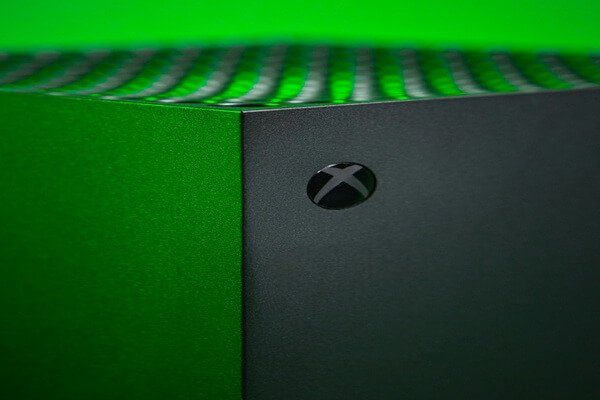
Newsletter Subscribe
Enter your email address below and subscribe to our newsletter

Enter your email address below and subscribe to our newsletter

Exclusivity has always influenced the gaming industry, but in 2025, its impact has become unavoidable. From console wars to streaming deals, exclusives now drive more than loyalty. They drive sales. As studios lock down franchises and platforms push proprietary content, demand for these games continues to climb.
For players, missing out is no longer an option. That pressure creates urgency, builds anticipation, and turns simple releases into global events. Studios understand this formula, and they are doubling down. The result is a market reshaped by platform strategy rather than genre or tech. In a year dominated by cross-industry mergers and content consolidation, exclusivity stands at the center of consumer behavior.
With game titles now fueling hardware adoption, brand engagement, and content ecosystems, the surge shows no sign of slowing.
Developers in 2025 are no longer building for everyone. Instead, they are signing contracts that restrict distribution to a single console, storefront, or cloud provider. These exclusivity deals are not just about technical optimization. They’re about positioning.
A new role-playing franchise might skip PC entirely and launch only on one console. That approach may seem limiting, but it works. The fear of missing out drives preorders. Gamers are more likely to buy the required hardware or subscribe to a new service when a single title dominates the conversation.
Smaller studios are also participating. Indie hits are being acquired early, often before trailers drop. The moment a publisher spots potential, deals are made. That reduces risk for developers and gives platforms premium content for their users. These calculated agreements don’t just support the games; they shift entire buying patterns.
Gamers used to protest exclusivity. Now they expect it. The shift is not just cultural; it’s behavioral. Players recognize that content moves in cycles. They know where to look, how to track drops, and when to act. The system may be restrictive, but it’s transparent.
A major part of that shift comes from how exclusive games reward early access and platform loyalty. Whether the title offers immersive storylines or competitive multiplayer features, the fact that it’s only available in one place gives players a reason to stay engaged. These releases don’t just shape preference; they shape routines.
This acceptance allows studios to lean in harder. Titles that once launched everywhere now follow tight platform rules. That includes DLC, co-op features, and even mod access. Some games might offer full features on one device but limit them on others.
Game releases in 2025 don’t exist in isolation. They anchor broader content strategies. A racing sim exclusive to one console might also have a mobile companion app, a merchandise line, and a documentary series on a streaming platform. These integrations expand reach but also strengthen exclusivity.
Franchises are now launched with layered media support. Players are not just buying games. They’re entering branded ecosystems. Exclusive in-game rewards, seasonal passes, and even physical collectibles are tied to platform loyalty. The deeper the connection, the harder it becomes to switch.
This multi-touch strategy works because exclusivity adds perceived value. If a game can only be accessed on one device and that device unlocks other perks, the purchase becomes a bundle. The game is still the main draw, but everything around it helps seal the decision.
The exclusivity model works because it aligns incentives. Studios get support. Platforms get traffic. Players get early access. Here are the key advantages driving continued adoption:
More importantly, everyone now plans around it. Preorders reflect this shift. Game demand is measured in weeks, not months. Launch-day traffic can still crash servers, and game stores see physical lines during major releases. That buzz is not accidental. It’s built from months of strategic announcements and media seeding.
Exclusivity also makes forecasting easier. Studios know what to expect from each drop. Platforms can plan for spikes in playtime, support requests, and in-game purchases. The whole model encourages coordination, which reduces risk and boosts results.
In 2025, owning intellectual property is no longer enough. Owning where it launches, how it updates, and who gets it first is the true goal.
That early commitment shapes development. Studios optimize for one hardware setup. They add features unique to that platform. Even UI design adjusts to the exclusive platform’s layout. These efforts deepen the experience and give players something they can’t get anywhere else.
It also reduces support complexity. Fewer platforms mean fewer bugs, fewer patches, and tighter QA cycles. That efficiency keeps development costs stable and accelerates time to market. With deadlines more predictable, publishers can sync releases with broader marketing pushes.
The impact of exclusivity stretches beyond the gaming world. Music artists, streamers, and athletes are getting involved. Some games offer character skins tied to exclusive concert footage. Others drop limited-edition collabs only available to subscribers of a certain service.
This cross-industry blending reinforces the exclusivity strategy. A launch is no longer about gameplay alone; it’s a media event. Influencers receive early builds. Streamers get embargoed content. Platforms host preview nights. That coordination drives hype and gives fans a reason to tune in early.
Game demand reflects more than player interest. It reflects cultural reach. In 2025, nothing boosts that reach faster than exclusivity.
Exclusivity is no longer just a marketing strategy. It is the engine powering game demand in 2025. From hardware bundles to cloud rollouts, every decision now starts with access control. Players respond in kind. They subscribe, they preorder, they follow the roadmap.
Studios are not just making games for play. They’re building entire platforms around access. In this system, exclusivity is the gateway. For now, that gate is wide open for those who are paying attention.